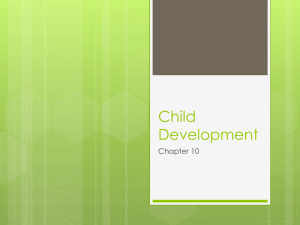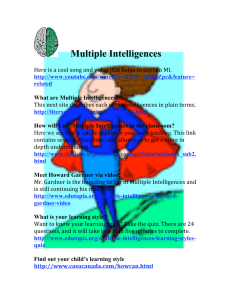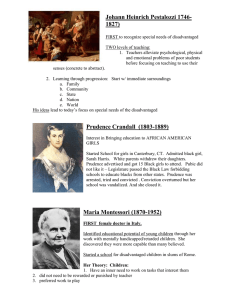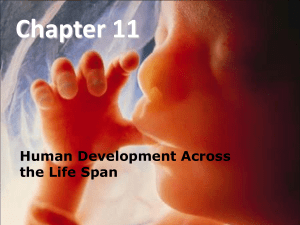Piaget's Theory of Intellectual Development
advertisement
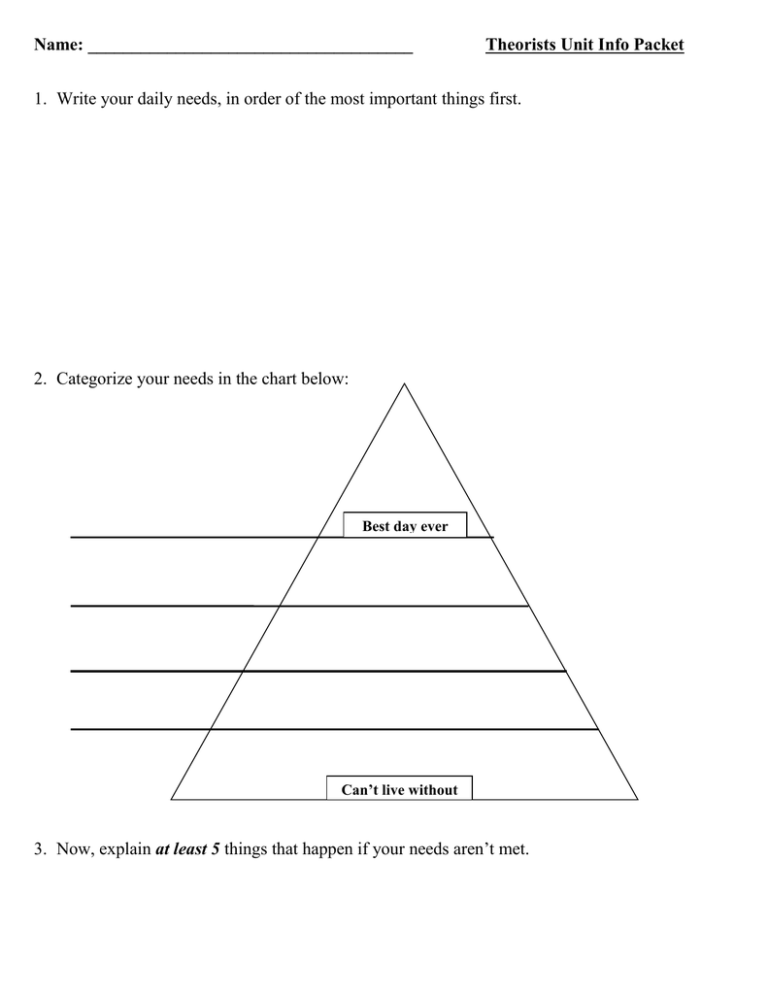
Name: _____________________________________ Theorists Unit Info Packet 1. Write your daily needs, in order of the most important things first. 2. Categorize your needs in the chart below: Best day ever Can’t live without 3. Now, explain at least 5 things that happen if your needs aren’t met. MASLOW’S HEIRARCHY OF NEEDS 1. Using info from the PPT discussion, complete the chart below, showing what Maslow thought: Best day ever Can’t live without 2. Now, explain at least 5 things that happen if these needs aren’t met. 3. How do you see this relating to education? Parenting?? Piaget’s Theory of Intellectual Development 1. Using the information from the PPT discussion and article, explain the four stages, with ages, of Piaget’s cognitive development theory. a. Sensorimotor b. Preoperational c. Concrete Operational d. Formal Operational 2. Describe at least 2 activities that a person in each one of the stages could do. 3. Some days, you might feel as though you float in and out of stages? Give an example to explain how that might happen. Gardner’s Theory of Multiple Intelligences 1. Using the information from the PPT discussion, complete the chart of Gardner’s theory of multiple intelligences. 2. From a teacher’s perspective, what are 2 activities that you could do with each intelligence? 3. What are your strongest intelligences? Why do you think so? Kohlberg’s Theory of Moral Development 1. Explain what you believe are the 4 most influential aspects of a person’s moral development. 2. What does the following picture mean to you with regard to moral development? 3. Explain in your own words the stages of Kohlberg’s theory of moral development. a. Stage 1 – Obedience/Punishment b. Stage 2 – Self Interest c. Stage 3 – Social Conformity d. Stage 4 – Law and Order e. Stage 5 – Social Contract f. Stage 6 – Universal Ethics/Principles 4. Explain how would you teach a child who is 3, 8, 11, 14, and 18 morals appropriate for each age. Erikson’s Theory of Social/Emotional Development 0-2 2-3 3-5 6-11 12-18 19-40 40-65 65 + 1. The two stages we are looking at are the Industry vs Inferiority stage of the school-aged child and the Identity vs Role Confusion stage of the adolescent. Explain two ideas that you think someone in each stage has to figure out to be successful. Why do you think so? 2. What are 2 tips you could give parents AND 2 tips for teachers for dealing with people during each stage? 3. Explain how the stage you are in now both helps AND hinders your learning?

